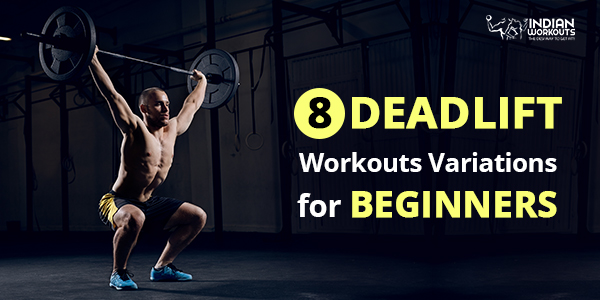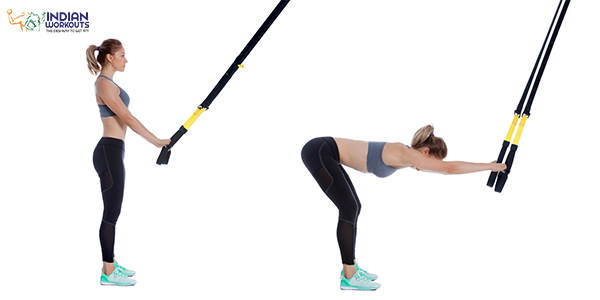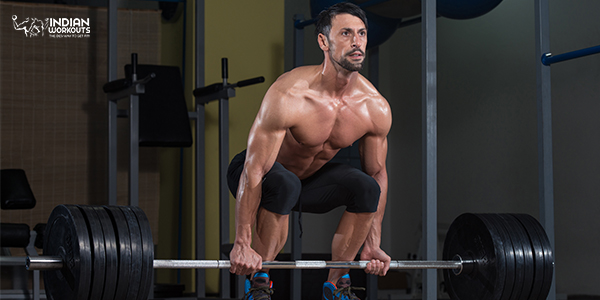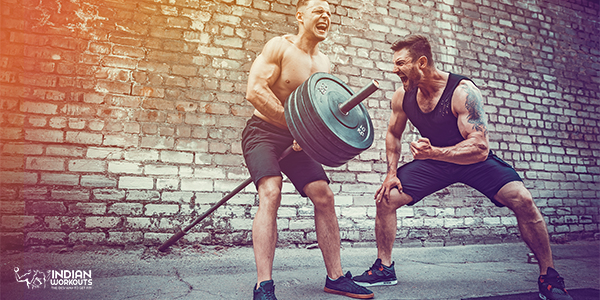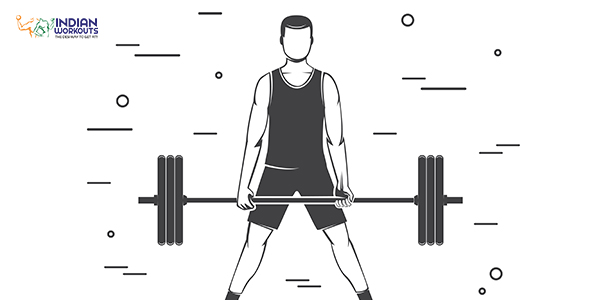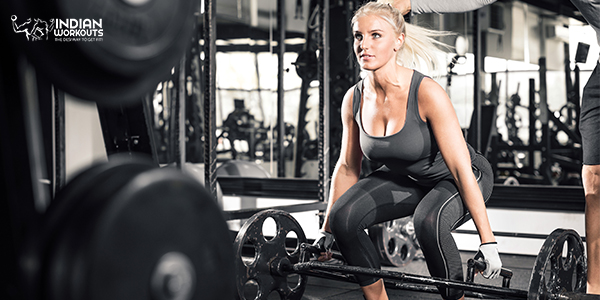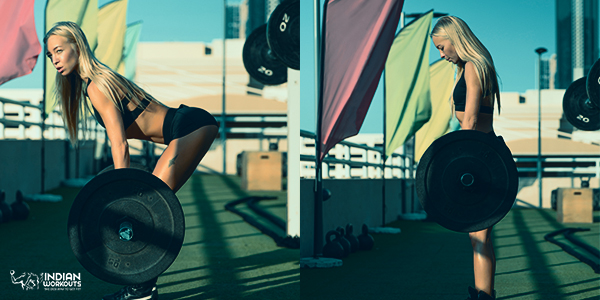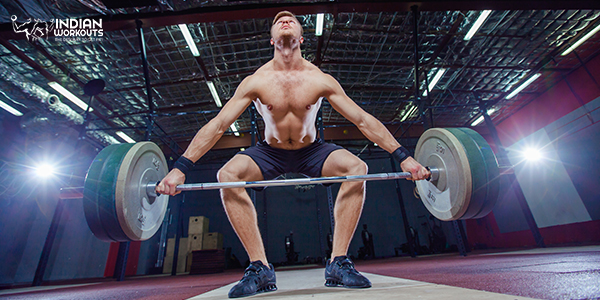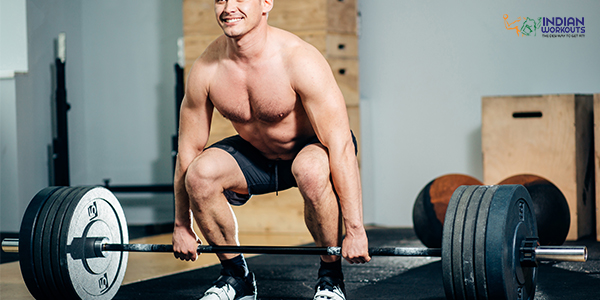The Deadlift. The name is synonymous with strength and fitness. The Deadlift workout is the one body-weight exercise which every fitness enthusiast swears by. If it is performed the right way, it hits the majority of muscles and helps build mass in all the right places.
So, can it really replace the squat as the king of exercises? Not yet, but it can build upper and lower body strength like no other strength-training workout can. This article will help you know the following things.
How To Perform Deadlift Workout for Beginners
Whenever we speak of deadlift we think a muscular person clenching his/her teeth and holding up a barbell over the head. Yeah, it’s that, but it isn’t only about how heavy you lift, it is also about how you maintain perfect form.
The better your form, the lesser your injury risk. Good form means distributing the load across different tissues and not loading up on one area, such as the lower back. Good form also means good performance. You employ the right muscles as you lift the bar towards the lockout position. Lifting with good form also means you utilize the legs, back, and hips well.
Begin with the Hip Hinge
Where do you start? First master the basics when you are trying the powerlifting deadlift workout.
The standard deadlift is what you will call a loaded hip hinge, a basic human movement pattern. What’s a hip hinge, you ask? It’s when you hinge at the hips. This is when you do not sit down, but sit back. This is what differentiates it from the squat. The movement focuses on your hips rather than on your knees. Your butt goes back as you sit back, then emphasizing your glutes you stand up.
Maintain a neutral spine while you are trying the hip hinge. Stand near a wall and softly bend at the knees, maintain a slight arch in your lower back. Slowly, hinge back as your butt grazes the wall. When you do the hinge right, you do your deadlift better.
Maintain Proper Form for the Deadlift
Now, with your hip hinge done and dusted, go with the next step. Keep your feet hip-distance apart and your grip outside your legs. Get an overhand grip. Maintain a flat back throughout. Keep your shoulders back and down. Ensure the bar connects with your legs the entire time. Next, your hips and knees move together to transfer the bar from the ground to the next position, the upper-thigh locked position.
Maintain a flat back even when you lift from the floor, and if you can’t do that, just don’t lift from the floor. You can elevate the bar on the squat-rack pins or jerk boxes that will help you flatten your spine. This is known as the rack pull deadlift. This is a great one for a beginner, as beginners sometimes have mobility issues and tight hamstrings.
How To Graduate to the Next Level
When is heavy too heavy as far as your weight on the barbell is concerned? If your hips and knees don’t move in tandem, the weight is too heavy. Get a qualified coach on board, but if it’s not possible for you to start increasing the weight bit, by bit. (Add 5-10 pounds to the bar every week) This is the easiest way to practice beginner deadlift weight workout and gradually move towards the next level.
How do you perform a conventional deadlift?
You can start by grasping your free weight bar, add as many weights as you are comfortable to lift and then lift the bar up by lifting up until you are standing up with the bar right in front of you and your arms extended.
Deadlift Workouts – Deadlift Workout Benefits
Trust us, the deadlift is the best thing to transform our body. Period. Lifting weights and resistance training can help accelerate your fat burning process, and whenever you think of strength-training you think of deadlift, you literally keep them in the same breath.
There are numerous benefits to this exercise. Some of them are as follows.
It helps with your posture – Since deadlift increases your core strength, it helps maintain your posture, and with a good posture, you are able to do your daily tasks with that much more strength.
It works the majority of the muscles – The deadlift can substitute every other exercise in the gym, as it works the upper body, the lower body, and the back.
It mimics real life movements – No other workout in the gym can help you in your everyday movements than the deadlift. If you want to lift something heavy, your grocery or anything else, it helps you do it with a lot of strength and good posture. Now you know why those heavy buckets of water or grocery seemed so easy for you to carry after you tried the conventional deadlift at the gym.
Improves your grip strength – Your forearms and your grip strength are magnified to a great strength as your fingers are the only connection with the weight. Your arms have to work that much harder to hold that weight.
Proliferates the right hormones – For the Human growth hormone, the one hormone which can increase fat burn and help grow muscles, a deadlift is a perfect exercise to ensure its proliferation. It also increases more testosterone which in turn can help in muscle growth and muscle repair.
Prevents injury – Deadlifts can increase the strength of your important ligaments and tendons and acts as a cushion to save you from injuries. The hamstrings and, lower back are particularly helped by the super-efficient deadlift.
Increases your cardio strength – A bout of strength-training can up your cardiovascular fitness, especially deadlifts. Ten deadlifts are all it takes to knock the breath out of you!
8 Deadlift Variations to Try
Whenever we speak of deadlift exercises, the conventional barbell deadlifts are the first thing that come to your mind. But that is not the only workout you can do. You can choose a variety of deadlifts to cater to your fitness goals, height and body proportions.
If you have got your form correct then you can safely try other modifications of the conventional deadlift. The trick is to get your form correct, and if it is correct, you can gradually increase your strength by trying these 8 deadlift workout for beginners!
1. The Landmine Deadlift
The conventional deadlift is said to be quite a backbreaker and it is tougher still to get your form correct. Using a landmine can solve your predicament. This is the perfect deadlift workout routine for beginners.
How to do it right
- Get the sleeve of a barbell to fit into the cylinder of a landmine unit, it resembles a home plate.
- Just stand at the opposite end of the bar and load its sleeve with the weight.
- Even if you don’t have a landmine in your gym, you can wedge the bar into a corner.
- Stand straight with your feet shoulder-width apart and slowly bend at the hips, as you bend at your knees till you grasp the sleeve in a grip your fingers interlaced. Keep your lower back flat.
- Take a deep breath. Turn your feet outward, keeping yourself onto the floor, and extend your hips in a way to lift the bar up in front of you.
2. Sumo Deadlift
A Sumo deadlift is great for maintaining an upright torso and can put more stress on your legs, particularly when it comes to glutes and quads. They are not something you can nail right at the start and can even feel awkward for first-timers, but you can pull it off with a flat back as against a conventional deadlift workout.
How to do it right
- When doing the sumo deadlift, rather than focusing on pulling the weight up, keep up the focus on keeping your knees out wide and push your feet out to the sides like a sumo wrestler, as if you are trying to spread the floor apart with your feet.
- Then bring your hips forward.
- This will help you with your leverage and allow to lift more weight.
3. Rack Pull
The rack pull is a great movement that helps build total-body strength, strengthening both upper body and lower body. This exercise helps to correct the deadlift form as it limits the range of motion as which is you pull the weight from a rack around knee height and not from the floor.
How to do it right
- Take a barbell on a squat rack and keep it just above your knees.
- Keep your feet shoulder-width apart and bend at your knees, lean slightly forward from your hips to grab the bar with one palm facing away and another palm facing inward.
- Extend your knees and hips, and keep the weight up and back until you are able to lock your body
- Pause, then keep the bar back to the starting position.
4. Hex or Trap Bar Deadlift
The dead-lift when performed with a trap bar, can help you achieve quite the same effect of a conventional deadlift but without the risk. The equipment you will need is a trap bar or a hex bar along with weight plates.
How to do it right
- Step inside the bar.
- The elbows should be extended fully.
- Use a neutral grip to get hold of the bar.
- Hold the parallel handles on each side into a parallel grip.
- Your hand should be near your shin.
- Grip it in the middle of each handle. Enhance the grip with the help of chalk.
- Wrap the thumb around the bar. Squeeze the bar tightly.
- Stick out the chest while you pull back the shoulder blades. Maintain this for the entire movement.
- This prevents the rounding of the lower back.
- It also helps balance the stress for all the muscles.
5. Romanian Deadlift
Romanian deadlifts emphasize the hamstrings and glutes, so if you are aiming to work in those areas you can try the Romanian deadlift. Also, people with knee issues can try this form of deadlift to avoid any injury.
How to do it right
- Grasp the barbell from a rack or deadlift from the floor with your feet shoulder- width apart to a wide overhand grip. Stand with a narrower stance.
- Lower the bar toward the top of feet when you bend the hips while you trace the front contour of legs through the downward motion.
- With slow precise movement, bend your knees and keep your spine straight so the back is near horizontal at the lowest position.
- Once the hamstring is fully stretched just before you lower the bar to the floor, lift the bar by extending your hips and knees until you stand upright.
- Pull back the shoulders until they are rounded. Repeat the movement.
6. Windmill Deadlift
The windmill deadlift is a great exercise that zeroes in your core, work on your shoulder stability, and greatly improves flexibility.
How to do it right
- Bring your kettlebell overhead safely with the use of either clean and press motion or snatch.
- Concentrate on your foot placement as one foot should be underneath the hip of the overhead arm and the other leg should diagonally out from the body.
- If you are flexible, you won’t need to spread your legs.
- Keep the spine from flexing forward, and the overhead arm should be locked, pointing toward the sky. Reach towards the floor, hinging at the hips.
- Reach forward to push your hips and glutes back towards the hip in the opposite direction.
- Keep the arm locked out towards the ceiling, once you reach the bottom of the range of motion. Bring your bicep close to your ear and stand in the upright direction.
7. Snatch-grip Deadlift
Deadlifts aren’t always very lower back friendly, they say; not true! Not when you have tried the snatch-grip deadlift, which safeguards your spine, improves hip mobility and ensures an increased range of motion.
How to do it right?
- Rotate your feet out slightly to allow a deeper starting position.
- Keep your feet about shoulder width apart and the bar lined up over mid-foot.
- Pull your body towards the bar and keep your middle finger on the ring of the barbell, play with a width based on height and limb length, and keep one finger touching the ring.
- Drop your hips until your bar touches the shins, pull your bar tightly with your lats, locking the elbows, and lifting the chest.
- When you have splitting tension across your upper back and a welded spine, you will be able to pull of the movement.
8. Deficit Deadlift
A deficit deadlift is a deadlift exercise performed while standing on a short platform or a weight plate which is usually around one to four inches high. If you have trouble handling a deadlift then a deficit deadlift can come to your rescue.
How to do it right
- Start by having weight plates where you can stand upon, usually 1-3 inches in height.
- Position the bar so that it is centered right over your feet. Keep your feet about hip-width apart.
- Bend at the hip and get hold of the bar at shoulder width, allow your shoulder blades to protract.
- Use an overhand grip or an over/under grip for the heavier sets.
- Take a big breath and then lower your hips while you bend your knees until your shins touch the bar.
- Keep your gaze forward with your head and your chest up and you’re back arched and begin driving through the heels to move the weight upward.
- Pull the bar back when the bar passes the knees, your shoulder blades should be pulled together as you drive your hips forward into the bar.
- Lower the bar while bending from the hips and guiding it to the floor.
Now that you have acquainted yourself with various deadlift variations, have you wondered which the best one for you is?
You can only reap the benefits of the exercise if you perform it with the proper form and also a neutral spine. To keep yourself safe and prevent injuries, make sure you keep a neutral spine as it allows for adequate mobility and safety.
For beginners, arguably the best deadlift is the Romanian deadlift. Once you master the trap or hex bar, deadlift can be the next one for you to try, as the structure of the bar and high handles can enable you to nail the deadlift form, as it minimizes the demand for more movement and also decreases the chances of injury.
Strangely the conventional deadlift is the most difficult one to do, but once you gain strength by doing all the other deadlifts gradually you will be able to master the conventional deadlift too with great finesse.
